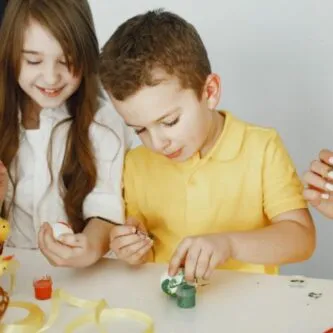
There are several ways to develop critical thinking skills in your child. But what exactly is “critical thinking”?
In simple terms, this concept refers to the ability of a person to think and decide for themselves. A person who’s able to exercise critical thinking isn’t easily swayed by the judgments and opinions of others. They always make sure to get their facts right before they make a choice or give an opinion on a subject matter.
In many ways, critical thinking is one of the most essential skills that your child will benefit from in the long run. Don’t worry if you don’t know the first thing about teaching this to your child — here are some tips and tricks to help you out.
Give Them A Chance to Explain Their Side
Parents and children may have different thought processes on how to go about things. This may be one of the main causes of conflict. For example, when your child has done something wrong, your first instinct might be to scold them.
Instead of doing this knee-jerk reaction, why don’t you give your child the chance to explain their side? Ask them questions about the reasons or the rationale behind their actions. This helps them become more reflective — they’re adopting a more inward approach by trying to figure out why they did what they did.
Encourage Them to Be Factual
Your child has access to tons of online resources. Technology has made it more convenient for them to use smartphones or tablets to enrich their learning.
Knowing this, it’s important that you encourage your child to use their resources productively. Help them understand the importance of being factual. When they don’t know an answer to a question, instead of giving them an answer straight away, let them research the facts on their own.
Aside from helping them become independent, this also teaches them to find solutions for any future problems they might encounter.
Solve Puzzles Together
Solving puzzles is a great way for your child to make decisions on their own. These simple tools develop not only your child’s motor functions, but also memory skills, spatial awareness, hand-eye coordination, language, and many more.
Try out classic puzzles like brain teasers that can allow your child to get creative and think out of the box when coming up with solutions.
Or you could always sit down with a pencil and paper while trying to solve a classic Sudoku puzzle —this might be a fun way to teach them math, as well as being a great puzzle for critical thinking development.
Let Them Figure Things Out on Their Own
Many parents may be tempted to spoon-feed their children, but they’re actually missing out on an opportunity to let their kids figure things out on their own.
Let’s look at another example. Let’s say you buy your child a dollhouse as a Christmas gift. You may be tempted to just assemble the toy all on your own, but it’s important that you include your child’s input. What you’ll want to do instead, is to give them the instruction manual and let them do their magic. Your job is only to serve as a guide, especially when they might be in need of tools like scissors, or any objects that may cause potential harm or injury.
Key Takeaway
Some of the simple ways to develop critical thinking skills in your child can be something as simple as solving puzzles with them, to something that may require more skill and knowledge — like allowing them to make their own choices.
While all of these tips may be useful, there is no one true way of properly learning critical thinking. It’s a learning process for both you and your child.
The challenge is for you to constantly find new ways of teaching or introducing this skill even at such an early age. Ultimately, you’ll be able to find methods that don’t only work for both of you but are also tailor-fit to your child’s needs and development journey.






-logo.png)



